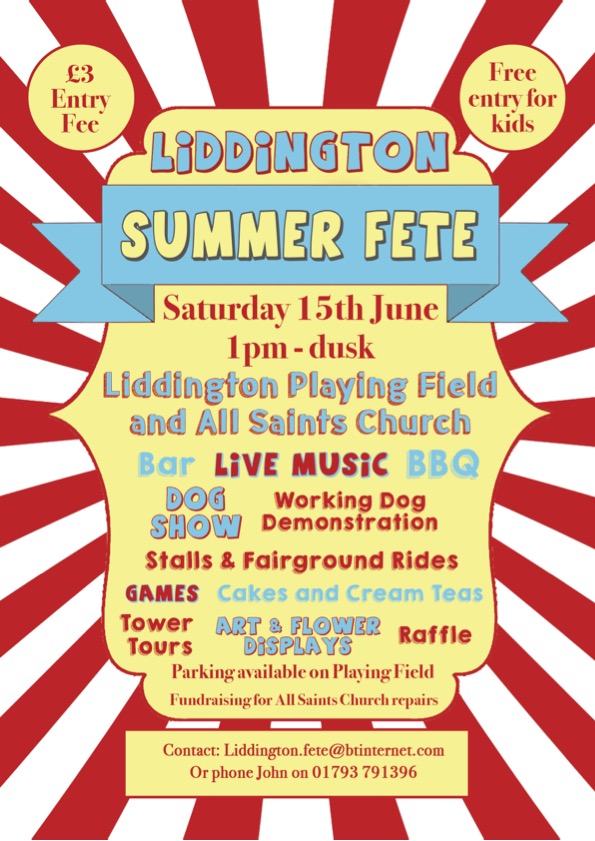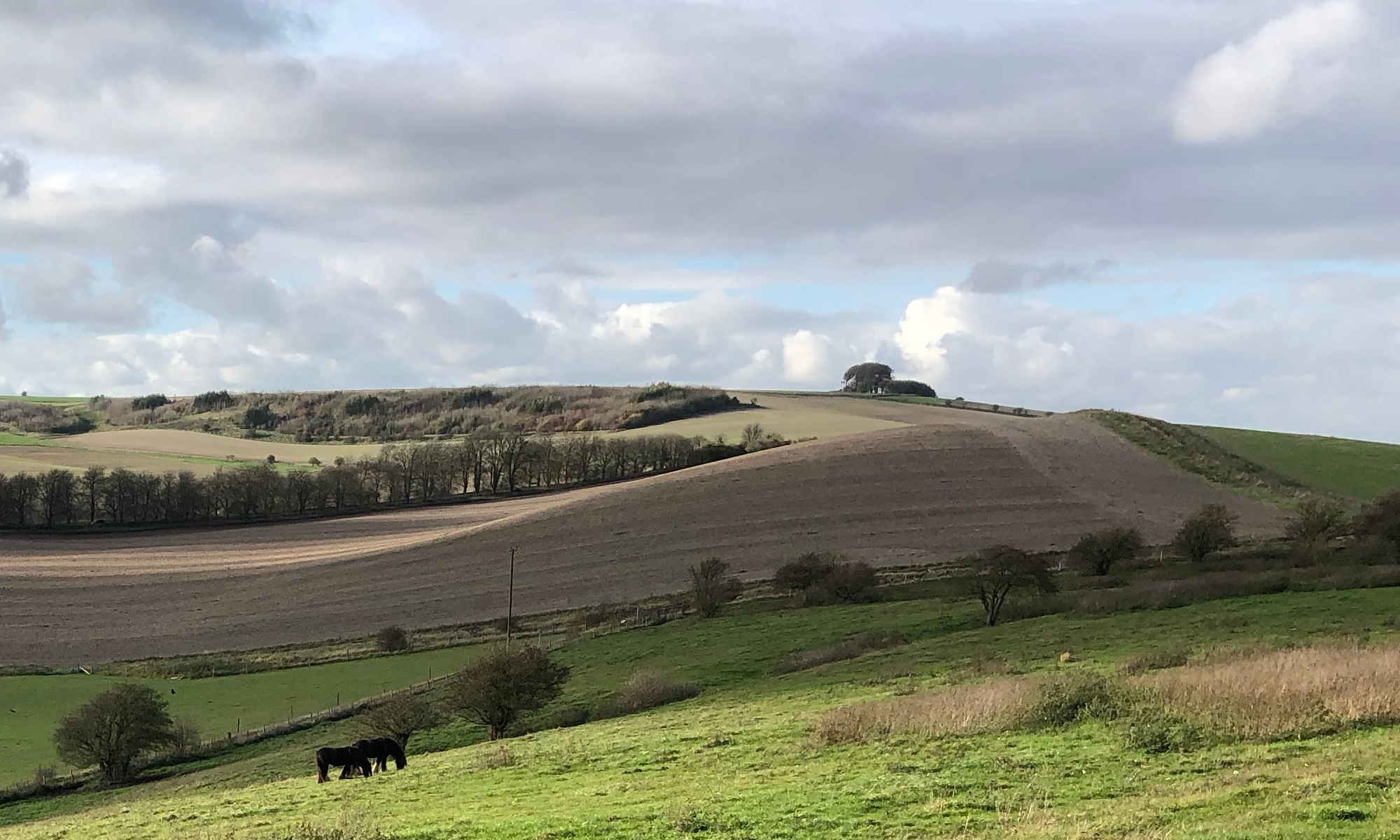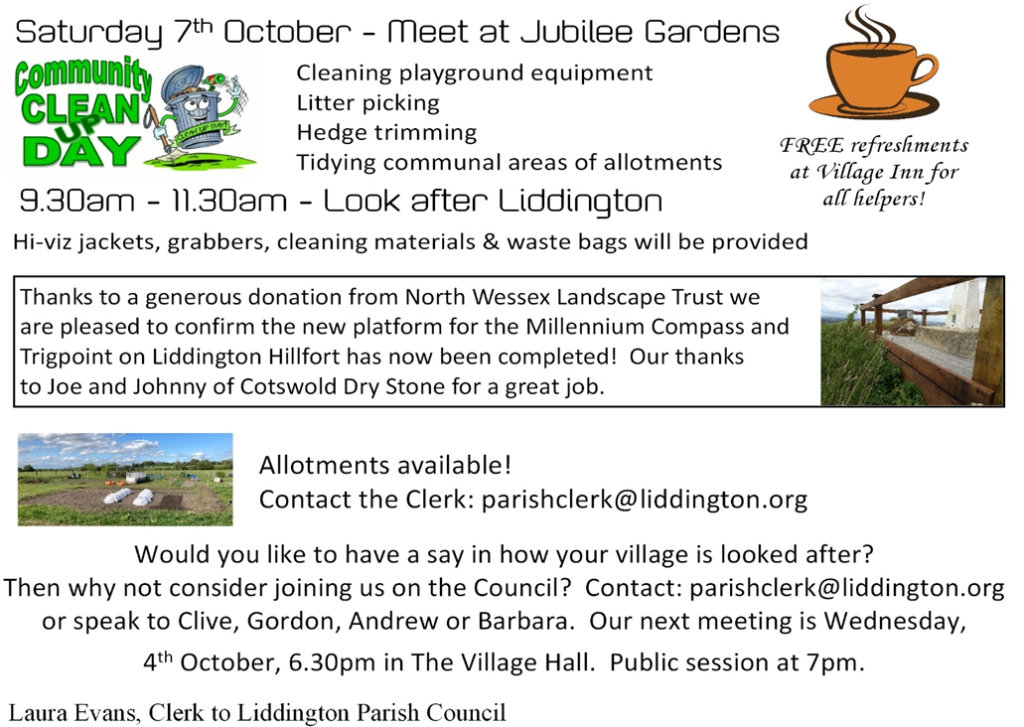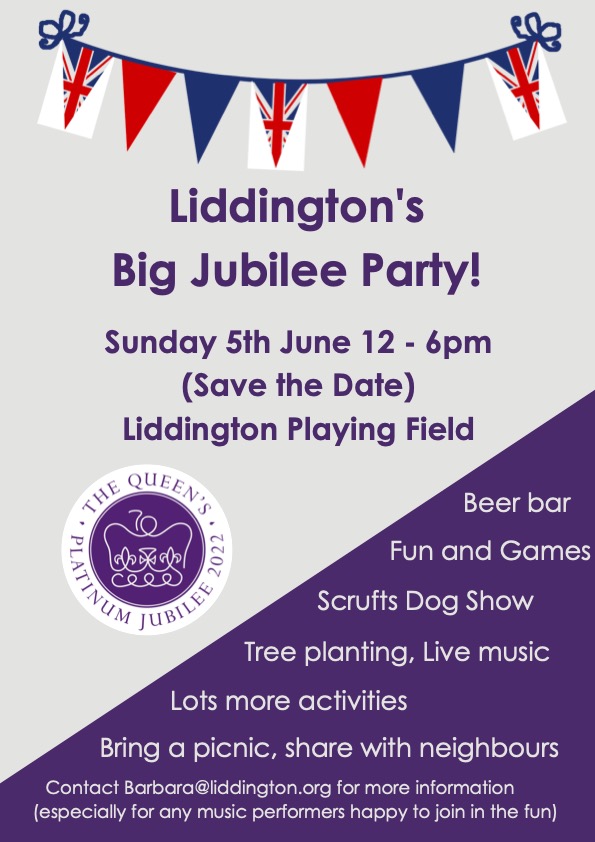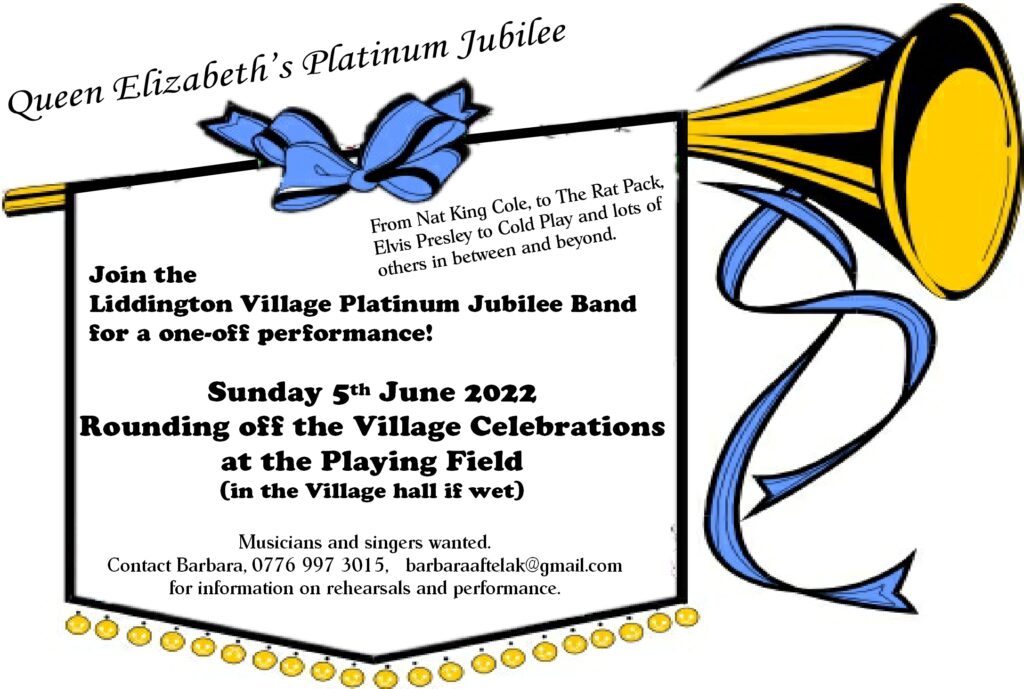It was good to return to meetings in the Village Hall after so many months of Zoom. To improve Accessibility to our meetings they now begin in the main hall and only move upstairs after the public session so that the stairs do not dissuade attendance. Remaining in the main hall for the duration of the meeting is not feasible due to it being hired out to other users from 7.30pm.
I would like to welcome Cllr.Barbara Aftelak who joined the Parish Council last summer. Barbara’s enthusiasm and willingness to get involved in community life is a great asset to Liddington. The Parish council still has been unable to fill a vacancy that has left us one short for over a year.
Village Appearance.
I would like to thank Adams and Watt for the continued excellence of their work in grass cutting and general maintenance around the village. Richard Adams has always been very accommodating at fitting in extra bits and pieces of maintenance as they arise. Thank you.
Planning.
After a long and expensive battle, The Science Park development was not given the go- ahead.
Many people campaigned against this locally, not least Ward Councillor Gary Sumner and our own Cllr.Gordon Wilson. Thank you both for your hard work.
The Allotments.
Adrian Moore’s parting contribution to the Parish Council, after many years’ service, was to engage with The Diocese in procuring the Leasing of the Allotments for a period of fifteen years by the Parish Council from the Diocese. It required patience and dogged persistence. At
last, we have the Lease. Thank you, Adrian. Cllr. Lauren Hyatt has spearheaded the clean-up and regeneration of the site itself with help from John Kent and new residents, Karen and Andy Scuse who have kindly offered to keep tidy the east end which had become very overgrown. Thank you all. Plots can now be rented. Please contact the Parish Clerk, Laura Evans, for details.
Bus Stop , Purley Road.
For as many years as I can remember John Kent has maintained a beautiful flower bed by the bus stop. Its colour gives many people a warm sense of quiet pleasure. Thank you, John.
Defibrillators.
The second Defibrillator is now installed in the disused telephone box next to the old Post Office
in The Street. Thanks to Geoff Hales and Lauren Hyatt for helping repaint the kiosk. There is to be a Defibrillator Training session held in the Hall here on Wednesday, May 18th at 6pm. to remind us when and how to use a defibrillator in case of an emergency.
Road Safety.
This continues to be the biggest concern brought to the attention of the Parish Council. Twice in the past year our postman has knocked at my door, ashen faced, to report that main road speeding cars have only narrowly missed him as he delivered post. One of my colleagues reported that her small children and herself had a similar experience by the main Road.
Although the main road is the responsibility of SBC, Ward Councillor Gary Sumner said that while he agreed that speeding was a concern, there was nothing the SBC could do as enforcement is solely a police matter.
But there are of course other ways in which SBC could help with speeding traffic. It could have moved a speed monitor (whose malfunction was pointed out to it by us eighteen months ago). SBC’s response was dilatory: a whole year lapsed before granting us permission to move it at our own expense. It could have pushed forward with moving the pedestrian crossing point fifty yards down the hill to improve the visibility between pedestrians and car drivers. It could have put a bicycle lane on the main road from Medbourne Lane westwards to give the impression of the road narrowing and thus encouraging braking. It could have introduced a continuous 30 mph restriction between Badbury and Liddington. Apparently, this last proposal has made it onto the Long List. Perhaps the other ideas proposed over two years ago either did not make the cut to remain on this list or were never listed in the first place. The usual cry is it cannot be afforded. And yet SBC is now proposing very expensive residential 20MPH zones. How will they be enforced? Has the SBC conferred with the Police about this?
As far as enforcement is concerned, the Police emailed us to say that as approaching motorists could spot a parked defibrillator yellow police car a mile off, they had usually slowed down so could not be nabbed. Added to which, the officer wrote that Purley Road was not a high priority road for enforcement as the road did not have high reports of KSI ( killed , seriously injured). SBC appears to sympathise with this assessment in fact if not in spirit. So much for your Parish Council’s advocacy of a preventative approach to pedestrian safety. Must Liddington await KSI status before preventative measures are implemented by SBC?
I fear we will not get much help from either of the institutions with the power to help.
The only measure, apart from Community Speed Watch which does not have the sharpest of teeth, that The Parish Council can initiate is to install a third Speed Monitor so that we have one each end of the village and one that can be moved around in the middle of Purley road and in Medbourne Lane. This we will do.My thanks to Cllrs. Wilson, Hyatt and Bunney for cleaning the malfunctioning Speed Monitor and for attempting into relocate it .
Joel Joffe Memorial.
Lady Joffe came down from Bristol in the summer to unveil the Memorial to Joel Joffe. This Memorial was beautifully designed and executed by Ruth Moore. Around sixty people attended the unveiling and listened to Vanetta’s moving words. The Memorial is a reminder of the wide scope of Joel’s contributions and no small insight into important aspects of history. Thank you to all who helped make the event so celebratory, especially our CinC, Ruth.
Footpaths.
The second strand to remembering Joel was to name the existing public footpath, that runs from the intersection of The Street and the lane to the Manor alongside the stream to Bell Lane, Joel Joffe Way. New sign posting was required as the one at The Street end had mysteriously disappeared. It is, of course, the responsibility of the Parish Council to mark clearly the beginning and end of public Rights of Way, so that there can be no misunderstanding as to where we may walk or indeed run. Consequently, the Houdini sign has been replaced, on public land, with one of the two Joel Joffe Way Signs (the other being by Bell Lane).
Liddington Hill Trees.
I wrote a short piece in The Lyden a few months ago about the danger of ill-considered and over use of this area becoming a threat to the beauty that draws people there in the first place. We are presently applying for a grant to assist making some improvements to repair the damage and encourage more sensitive usage. Thank you to those who responded by offering to help clear up the mess. We have been advised to pause this until the grant is secured.
Hillfort Millennial Viewing Platform.
Due to collapse this is fenced off and needs extensive repair. We are applying for a grant to help fund this.
Communications.
There are a number of ways in which The Parish Council tries to keep you in the picture. Minutes and Agendas of the monthly meetings are posted on the noticeboard against the Old Post Office wall and on the website. Additional information from meetings appears in The Lyden Magazine, on the noticeboard and on the website. The Parish Council encourages you to use the website and indeed contribute to it yourselves. Thank you, Cllr Sarah Hill, for all the work you have put in to making it a really useful source of news about Liddington and its Parish Council. We try to notify the Liddington Support Group’s chat forum and the website of any important items that arise between meetings. Do not forget there is a slot at every meeting for contributions from residents. And of course, the Parish Clerk can be contacted if you have any concerns or inspirational ideas. Laura Evans has been Clerk for a year now. My thanks to her for all her hard work. She is always cheerful and makes light of the tasks we pass her way.




1
Village Clean-up days and Jubilee Gardens.
Thank you to those who have helped maintain Jubilee Gardens which in a sense lies at the entrance to the village, and thanks to the dozen or so who have helped with clean-up days.
The Queen’s Platinum Jubilee Celebration.
Hats off to everyone especially Mandy Klapish and John Mathieson for organising next month’s Event on The Liddington Playing Field. The Parish Council has offered to support the celebration as and how it might be useful so to do. I very much look forward to the day.
Finally, may I thank all my colleagues on the Parish Council for their ongoing contributions to the community.
David Lomax.
